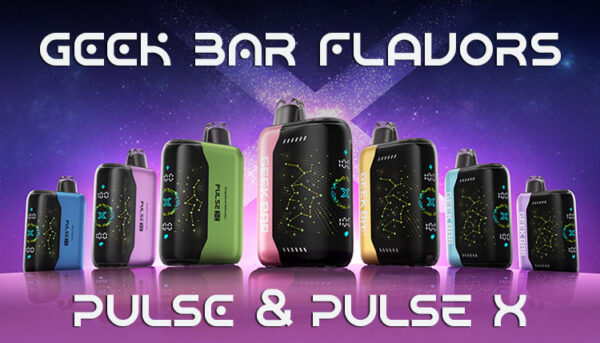Understanding Vape Juice Ingredients
Before you wrap your head around organic vape juice, let’s break down what goes into making it. Here, we’ll chew over the difference between fake nicotine and the real deal from tobacco plants, alongside the steps for getting that organic stamp of approval on your juice.
Synthetic Nicotine vs. Tobacco-derived Nicotine
Nicotine is the magic element in vape juice that gets things going. It might come from tobacco or be whipped up in a lab. Knowing where your nicotine comes from can help you make choices that feel right for you.
Synthetic Nicotine
This lab-made nicotine skips the tobacco plants altogether. Even though it’s cooked up in a test tube, it’s a dead ringer for tobacco-sourced nicotine. This makes it a hit for those wanting a tobacco-free option (Labstat).
- Purity: It can hit over 99% in purity or be blended with other forms of nicotine.
- Cost: Making synthetic nicotine is no cheap pop, being three to four times more costly than its natural cousin. But as it catches on, prices are dropping (Labstat).
Tobacco-derived Nicotine
This kind comes straight from the tobacco plants themselves. It’s been the go-to source for ages but carries concerns linked to the plant’s other nasty chemicals.
- Availability: Easy to find and kinder on the wallet than synthetic options.
- Impurities: Can have some unwanted hitchhikers from the extraction process.
Knowing what kind of nicotine suits your style can steer you toward the right vape juice for your needs and worries.
Organic Certification Process for Vape Juice
If you’re on the hunt for a genuinely green vape juice, knowing how it gets its organic badge is worth your while. The USDA, that’s the big boss here, checks out the e-liquid makers for the organic stamp.
Certification Process
- Rigorous Standards: The USDA makes sure that e-juice makers are sticking to top-notch standards to pass the purity and environmental friendliness test.
- Certified Brands: Only a handful like Essence Vapor and Virgin Vapor, can brag about having the USDA organic sticker on their bottles (Side-Line Magazine).
Key Ingredients
You might want to watch out for Vegetable Glycerin (VG) when picking organic vape juice. VG is a softer option than Propylene Glycol (PG) and can be listed as organic (Side-Line Magazine). VG’s plant-based, giving you a cleaner puff.
| Ingredient | Source | Organic Certification | Purpose |
|---|---|---|---|
| Nicotine | Tobacco or Synthetic | Limited | Main active kick |
| Vegetable Glycerin (VG) | Plants | Yep | Puff maker |
| Propylene Glycol (PG) | Created | Nope | Thinner |
By having the know-how about where these bits and bobs come from, you can make smarter picks in vape juice brands. If you’re skipping nicotine, checking out the nicotine-free vape juice aisle might be a smart move.
To dive into more about what’s in vape juice, head over to our page on vape juice ingredients.
Choosing Organic Ingredients
Picking organic vape juice is about going for cleaner, healthier stuff. You’ll mostly come across Propylene Glycol (PG) and Vegetable Glycerin (VG) in these juices. Knowing what sets them apart and making the right pick can make your vaping experience top-notch.
Propylene Glycol (PG) Restrictions
Propylene Glycol is a man-made liquid often found in vape juices. It’s famed for giving a good throat hit and holding flavor well, but it hits a snag when it comes to being organic. Because it’s not naturally sourced, PG can’t quite make the organic cut.
Some folks might find PG a bit irritating—they might feel their throat getting itchy or their mouth drying up. So, if you’re looking at going organic, you might want to skip PG and look for other options. For more scoop on different vape juice ingredients, check out our special section.
Embracing Vegetable Glycerin (VG)
Now, Vegetable Glycerin, that’s the natural deal. It comes from plants like soybean, flaxseed, or palm oil, which lines up with organic standards perfectly.
VG isn’t just organic-friendly, it’s got some perks:
- Smooth Sailing: Less likely to give you a scratchy throat, VG is easier on the system.
- Cloud Churning: VG is thicker, which means big and fluffy vapor clouds.
- Sweet Treat: It’s got a natural sweetness that boosts your vape juice flavor without needing extra sugar.
Because of these perks, many vapers are switching to VG-based liquids. Just a heads up though, high VG will need certain devices for the best experience. Check out our best vape juice guide to find VG-heavy options that fit what you’re after.
| Feature | Propylene Glycol (PG) | Vegetable Glycerin (VG) |
|---|---|---|
| Origin | Man-made | Plant-based |
| Organic Certification | Nope | Yep |
| Vapor Production | Thin | Thick |
| Throat Hit | Strong | Smooth |
| Taste | Flavorful | Slightly Sweet |
Choosing organic stuff like Vegetable Glycerin means your vaping is not only fun but also better for you. If you’re curious about the benefits of organic e-liquids, wander through our sections on cbd vape juice and thc vape juice.
Sugars and Sweeteners in Vape Juice
When thinking about the goop you use for your vaping fun, knowing what’s up with sugars and sweeteners is a big deal. Let’s chat about how these guys mess with your vape’s coils, plus the lowdown on organic versus synthetic sugars.
Impact on Coil Longevity
Sugars and sweeteners can really mess up your coil’s lifespan. Many e-liquids have artificial sweeteners, like sucralose and sucrose. When your vape heats up these synthetic sugars, they can cause “coil gunk” — this sticky mess crystallizes and hardens. It can burn or clog up your coils, making your vape taste like burnt toast and forcing you to swap out coils a lot (Side-Line Magazine).
If you grab sugar-free or organic e-liquids, you might dodge this problem and save some bucks on coil replacements. Check out this quick comparison of coil lifespans in different e-liquids:
| E-liquid Type | Coil Durability |
|---|---|
| Organic E-liquids | High |
| Sugar-free E-liquids | High |
| Synthetic Sugars (Sucralose, Sucrose) | Low |
Organic vs. Synthetic Sugars
Organic vape juice stands out by not having any artificial sweeteners at all. Under the National Organic Program, if a liquid’s got sucralose or sucrose, it can’t be labeled organic. A good organic e-liquid gives you great flavor without needing extra sugar (Side-Line Magazine).
Benefits of Organic Sugars:
- Natural Ingredients: Comes straight from Mother Nature, no fake stuff involved.
- Coil Health: Keeps your coils from gunking up, making them last longer.
- Flavor: Organic juices highlight the real flavors inside, giving you a purer taste.
Downsides of Synthetic Sugars:
- Coil Damage: More likely to ruin your coils fast ’cause of crystallization.
- Health Concerns: Some folks are still debating if these fake sugars are safe in the long haul.
If you’re trying to make smarter choices, maybe peek into nicotine-free vape juice or other vape juice flavors that rock organic stuff. Choosing organic over synthetic not only treats your coils better but also upgrades your whole vaping vibe.
Want to dive deeper into what’s in your vape juice? Check out our full scoop on vape juice ingredients.
Nicotine Content in Vape Juice
Let’s chat about what’s really inside your vape juice and why it matters when you’re picking out what to puff on. This bit will cover some eyebrow-raising facts about “nicotine-free” labels and what all that nicotine jazz does to your body’s line of defense.
What’s Up with “Nicotine-Free” Claims?
Ever grab a bottle of vape juice stamped “nicotine-free” and thought you were safe? Well, think again. Some of these should-be-clean juices sneakily carry a little nicotine. Like in a Guardian article, six out of seven vapes labeled as free from nicotine weren’t as clean as they claimed.
Just look at what these supposed nicotine-free brands actually had inside:
| Brand | Nicotine Content (mg) |
|---|---|
| Brand A | 0.5 |
| Brand B | 1.0 |
| Brand C | 2.5 |
| Brand D | 0.0 |
| Brand E | 0.8 |
Sketchy, huh? This labeling mess can land you in hot water health-wise. Double-check the truth behind “nicotine-free” tags (nicotine free vape juice) and stick with known vape juice brands for peace of mind.
What Nicotine Does to Your Immune System
Nicotine isn’t just about that buzz; it’s also got a lot to do with how your body handles getting sick. Short hits of nicotine might make your heart race and put you on high alert, which isn’t always fun if you’re already a bit jittery or under the weather (PMC).
And don’t even get me started on some e-liquids loaded with nicotine — these could be dangerous if you’re breathing them in, touching them, or, heaven forbid, swallowing any. Keep it up long-term, and nicotine could mess up your body’s ability to fend off germs.
When you’re choosing vape juice flavors, be smart about it. Know what you’re getting into and aim for the ones that play by the rules. Want to skip the nicotine? Check out our scoop on zero nicotine vape juice.
Grasping what’s in your vape and how it affects you means you can vape away with a clear conscience and in good health.
Potential Health Risks in Vape Juice
Impact on Lung Cells
You’re vaping and loving it, but there’s a bit you need to know about what might be lurking in that cloud. Turns out even if your e-cig is free of nicotine, it could be messing with your lung cells. These little guys are crucial soldiers in the fight to keep nasties out of your lungs, like airborne gunk and allergens. Research found that exposure to nicotine-free vape vapor can lead to cell damage, raising concerns around your respiratory system’s well-being (Thorax).
| Health Impact | Description |
|---|---|
| Lung Cell Damage | Breathe in vape vapors, risk hurting lung cell health |
| Respiratory Problems | More likely to get breathing-related issues |
Thinking of swapping out your vape choices? You might want to check out some nicotine-free vape juice options to get the scoop on the broader picture.
Harmful Chemicals in Flavorings
Those yummy flavors—alluring but possibly packing a chemical punch. Some of the goodies in that rainbow of vape juice flavors—diacetyl, acetylpropionyl, and acetoin—have raised eyebrows in the health world. In fact, they’re sometimes found in amounts beyond what’s safe in lab tests, with diacetyl linked to some lung problems (Environmental Health Perspectives).
| Chemical | Potential Health Problem |
|---|---|
| Diacetyl | Respiratory illnesses, adds a potential wheeze to your breeze |
| Acetylpropionyl | Can irritate your airways |
| Acetoin | Another culprit for respiratory irritation, could ruffle your air passages |
If you’re a fan of breathing easy, maybe it’s time to consider vape juices that are a bit friendlier on the ingredient list. Our guide on vape juice flavors offers insights on safer flavor choices.
Stick around and weigh your options before that next puff by checking out the A-Z on vape juice ingredients and how they might affect you. It’s all about making the choice that keeps you both happy and healthy.
Research on Vaping Effects
Effects of No-nicotine Vaping
Getting a handle on the effects of vaping without nicotine is pretty important if you’re considering ditching or sticking with the zero-nicotine path. Those fluids tagged as nicotine-free? Don’t take them at face value. An eye-opening report by The Guardian uncovered that a bunch of vapes, six out of seven to be exact, sneaked in bits of nicotine.
A deep dive into how no-nicotine vaping stacks up between cigarette smokers and those who don’t touch smokes showed some interesting stuff. If you’re a non-smoker, puffing on these for a bit doesn’t seem to stir up any immediate harm. But for smokers, there’s a tiny nudge on lung function. Those vaping fluids laced with nicotine? They give your blood pressure a quick spike, hanging around for about 45 seconds after you hit it. Such shifts hint at possible health ripples (BMC Pulmonary Medicine).
Curious about nicotine-free options? Delve into our piece on nicotine free vape juice.
Comparison with Nicotine Replacement Therapy
When you toss nicotine electronic cigarettes (ECs) into the ring with good old Nicotine Replacement Therapy (NRT), nicotine ECs pack a bigger punch in helping folks quit. A certain study laid it out with a quit rate risk ratio of 1.63 for nicotine ECs. This means out of every 100 folks, there were four more quitters compared to those going the NRT way (PMC).
| Method | Quit Rate (Per 100 Participants) |
|---|---|
| Nicotine ECs | 16.3 |
| Non-nicotine ECs | 8.3 |
| NRT | 12.3 |
| Behavioral Support Only | 2.5 |
Nicotine ECs also left non-nicotine ECs and just plain old support talks in the dust with a higher quit count. They rounded off with another two quitters per 100, boasting a risk ratio of 2.66 against just chatting with a support group (PMC).
For the nitty-gritty on what makes up vape juice and its effects on efficiency and health, check out our deep dives on vape juice ingredients and find your match among the best vape juice options.
Grasping these findings can steer you better when thinking about using organic vape juice and what it might mean for your health. Don’t forget to peek at our lineup of vape juices, like cbd vape juice, thc vape juice, and salt nic vape juice, to spot what suits you best.
Market Growth and FDA Regulations
Vaping’s Boom Over the Years
Since 2007, vaping has taken the spotlight, growing faster than a teenager’s TikTok fame. The global vaping scene shot up to a cool $12 to $14 billion around 2018 and 2019. America’s been flexing its vape muscles too, bumping up its market size from $2.5 billion in 2014 to $3.5 billion just a year later (PMC).
| Year | Global Market Value (Billion USD) | U.S. Market Value (Billion USD) |
|---|---|---|
| 2014 | – | 2.5 |
| 2015 | – | 3.5 |
| 2018 | 12 – 14 | – |
| 2019 | 12 – 14 | – |
The cash registers were ringing louder each year, jumping from $19 million in early 2011 to $409 million at the close of 2017 (PMC). By 2014, there were more vape brands than Netflix shows—about 460 ENDS brands at your fingertips, with flavors galore in roughly 35,000 vape shops across the States. For flavor fanatics, don’t miss our take on vape juice flavors.
The Rules Game in Vapelife
As vaping’s popularity soared, the U.S. FDA swooped in to set some rules, covering anything resembling a tobacco product—yep, that includes e-cigarettes, vape pens, and mods. Back in 2016, they laid down the law: any new tobacco gear, like vape juices, needs a thumbs-up on a premarket approval application. So far, no ENDS products have earned that FDA nod (PMC).
The FDA doesn’t just shake its finger; they’re writing up manufacturers and shops not playing by the book, handing out warning letters and civil fines for those dodging the premarket reviews. If you’re diving into the world of compliant vape juices, see our thoughts on nicotine free vape juice and best vape juice.
Wondering how different vape juices and their ingredients fit into this rulebook? Whether you’re into cbd vape juice, thc vape juice, or just curious what’s in these concoctions, our full guide on vape juice ingredients has all the deets you need.
Vaping Trends and Concerns
You need to keep up with what’s happening in the world of vaping, especially with all the buzz about teenagers getting hooked and the immediate effects of nicotine on your body. Knowing this stuff can help you make smart choices about your vape juice.
Increase in Youth Vaping
In recent years, vaping among the younger crowd has been on the rise and causing a stir. Check this out: between 2014 and 2019, the number of high school students in the U.S. giving vaping a whirl rocketed from 3.7% to 19.5%. Middle schoolers weren’t far behind, with their numbers jumping from 2.9% to 9.7% (PMC). Kids trying out these electronic nicotine gadgets are becoming more and more common.
But here’s the twist—between 2019 and 2020, the numbers took a dive. High schoolers using these e-cigarettes regularly dropped from 27.5% to 19.6%, and middle school users fell from 10.5% to 4.7%. Just a bit of hope there, but it still means we gotta tighten the rules and spread the word about vaping’s downsides for the younger audience.
Short-term Effects of Nicotine Exposure
You want to know what nicotine does to you right away? It’s good to be informed so you can make wise decisions about vaping. Especially for rookies or those puffing on strong stuff, nicotine can shake things up in your body. Some vapes touting themselves as nicotine-free end up sneaking in nicotine, sometimes going overboard (The Guardian)! This could mean you’re facing unknown health risks.
Here are some short-term effects of nicotine you should know about:
- Your heart’s going to race
- Blood pressure’s cruising in the fast lane
- Dopamine—a feel-good brain chemical—gets a nudge
- Your lungs might not be too happy
Knowing these effects helps you pick the right nicotine content that suits your health vibes.
| Effects | What You Might Feel |
|---|---|
| Heart and Blood | Fast-beating heart, blood pressure spikes |
| Brain | Dopamine boost |
| Lungs | Possible lung cell irritation, breathing trouble |
For extra on nicotine-free vaping and how it could mess with your immune system, check out another article of ours. Learn more about the risky stuff in vape flavors by hopping over to our vape juice ingredients section.
Knowing these trends and issues better equips you to make choices about organic vape juice that are safer and more enjoyable.









